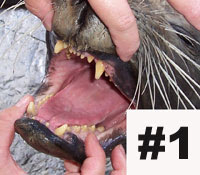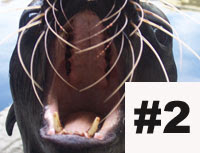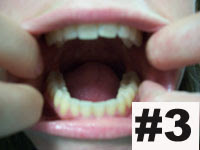Each morning we arrive early, prepared to get down and dirty in sinks full of frozen fish and squid. All of the fish needs to be thawed in cold water. In the summertime it feels good being up to your elbows in frigid fishy water, in the winter you're lucky if you can feel your hands. After everything is thawed, each individual fish and squid gets inspected to insure the highest quality. If there are any cuts, scrapes, exploded eyeballs or other damages, it is considered no good and is not fed to the seals. Only the best for our animals!


Once the fish is thawed we weigh buckets of fish for the seals' training sessions. We have our seafood analyzed and know how many calories are in each pound of the 3 different options (herring, capelin and squid). Our seals typically eat between 2,000 and 6,000 calories per day depending on the animal and the season.


Seals can have food preferences just like people. For example, our oldest seal Smoke enjoys squid, while her son Reggae is not a fan. There are many factors that we take into account when calculating how much food an animal needs. We look at their weight, how much they ate in past years, and how eager they are to participate in training sessions.

It can be difficult to figure out the perfect amounts. There are no points to count, or Valerie Bertinelli to deliver pre-made meals. We don't want them to be too hungry, or on the flip side, too full that they would rather use their food as a toy than eat it.
By the end of our morning fish prep, we are well on our way to smelling like a fish and the animals are getting excited about their first training sessions. Bon appetit!
-Justin













